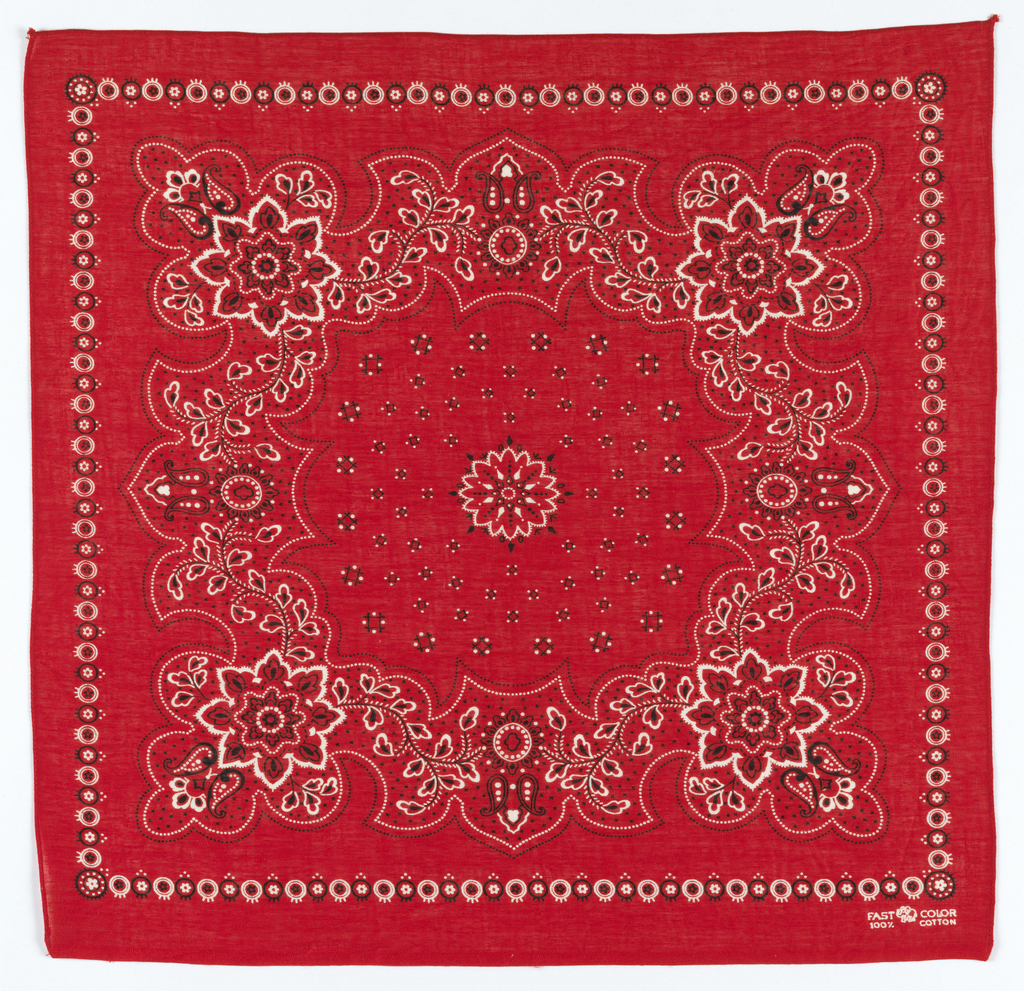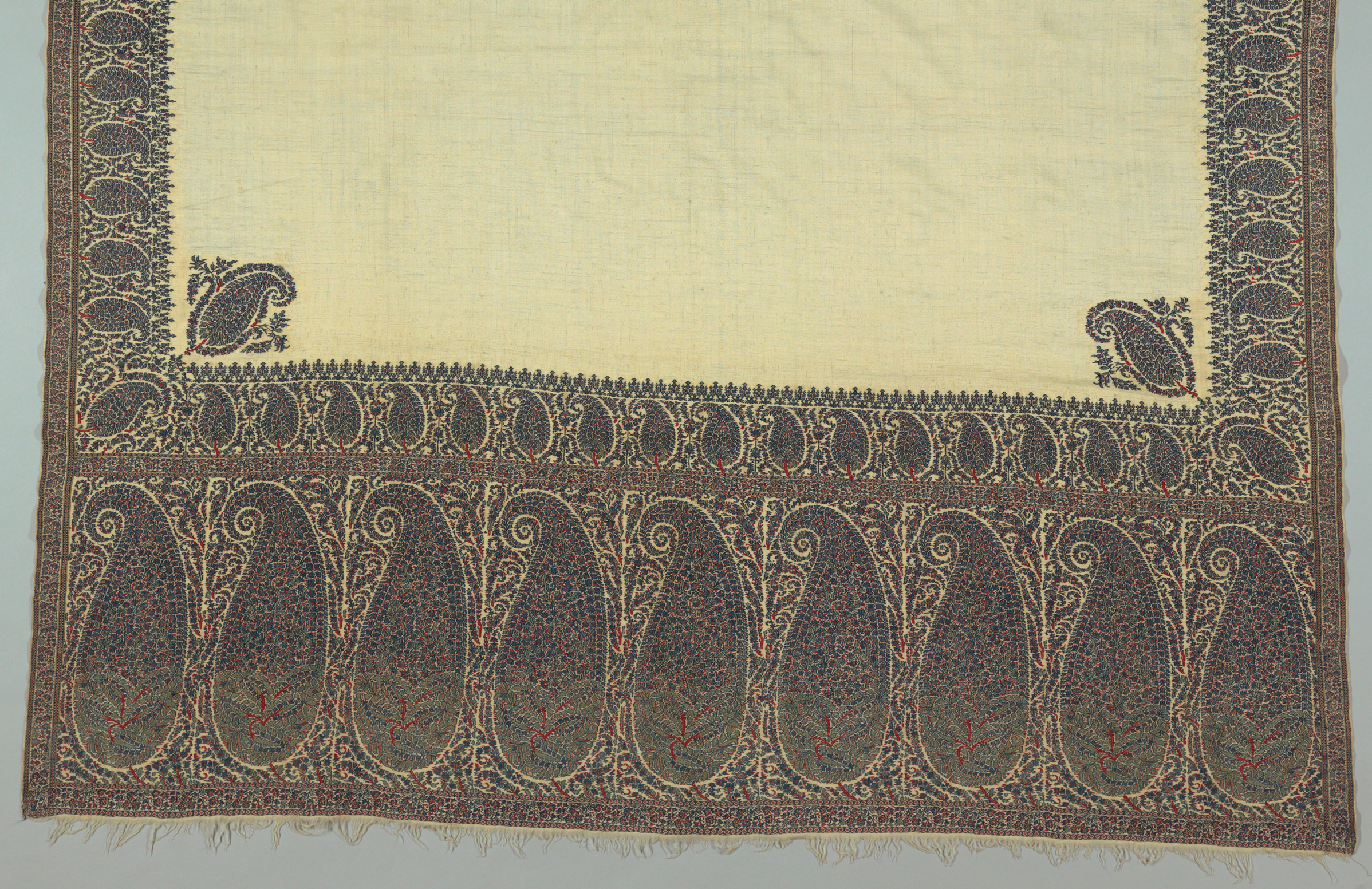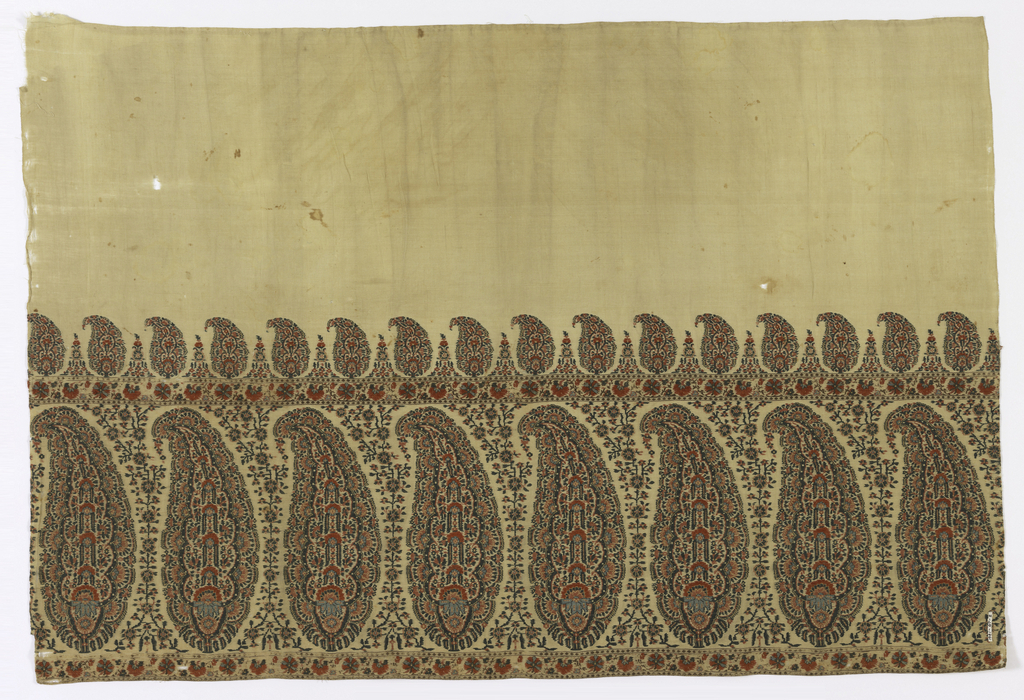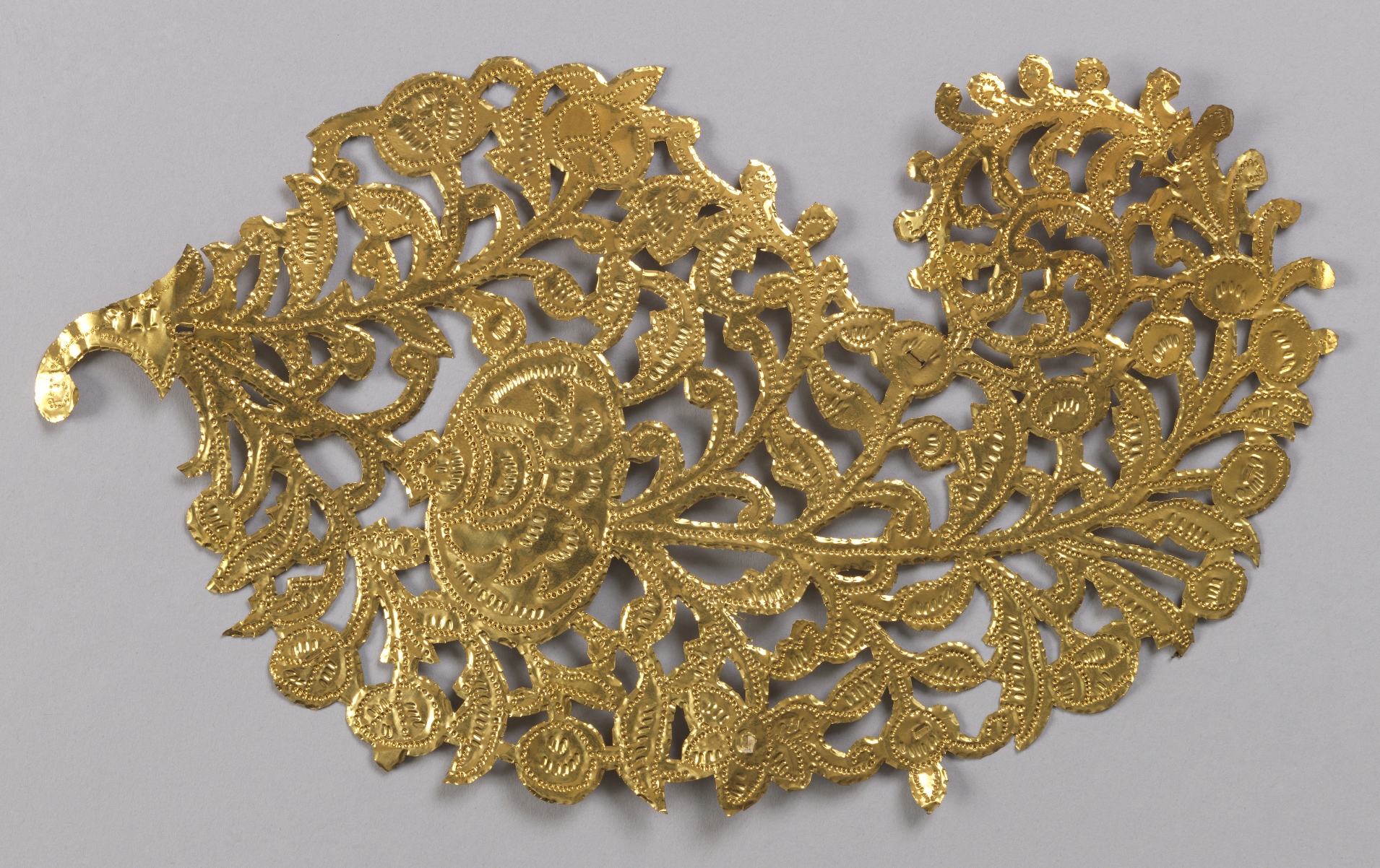The red cotton bandanna so closely linked to the American west was originally a tie-dyed silk scarf from India, and later the product of a number of European innovations. The Turkey-red process for dyeing cotton a brilliant, wash-fast scarlet red was mastered in Europe in the 18th century, but it was incompatible with printing processes....
In English, the common droplet-shaped motif found on Kashmir shawls is named after the Scottish town Paisley, which became famous for its imitation shawls in the first half of the 19th century. Locally, it is called boteh (Persian: بوته ; meaning “shrub”) or buta in the Indian subcontinent. Elsewhere on Object of the Day, Deputy Curatorial Director and Head of Textiles...
This sample book for the Paisley Collection is characteristic of the historic revivalism that was popular in the late 1960s. As the title suggests, all the designs are variations on the paisley motif. While many of the patterns show traditional styling, the designs have all been reinterpreted with a 1960s edge. The colors are vibrant,...
When Napoleon presented Josephine with a shawl that had been given to him on his Egyptian campaign (1798–1801), he started a fashion craze that lasted half a century and had major economic impacts on several nations. Fashionable ladies wearing the extremely lightweight Neoclassical gowns of the period went wild for the soft, beautiful and very...
This brass foil decoration in what we know as a paisley form represents an example of the designs created by Lockwood de Forest, the foremost exponent of Indian design in America during the last quarter of the nineteenth and early twentieth centuries. De Forest went to India in 1881 on his honeymoon to see first-hand...




